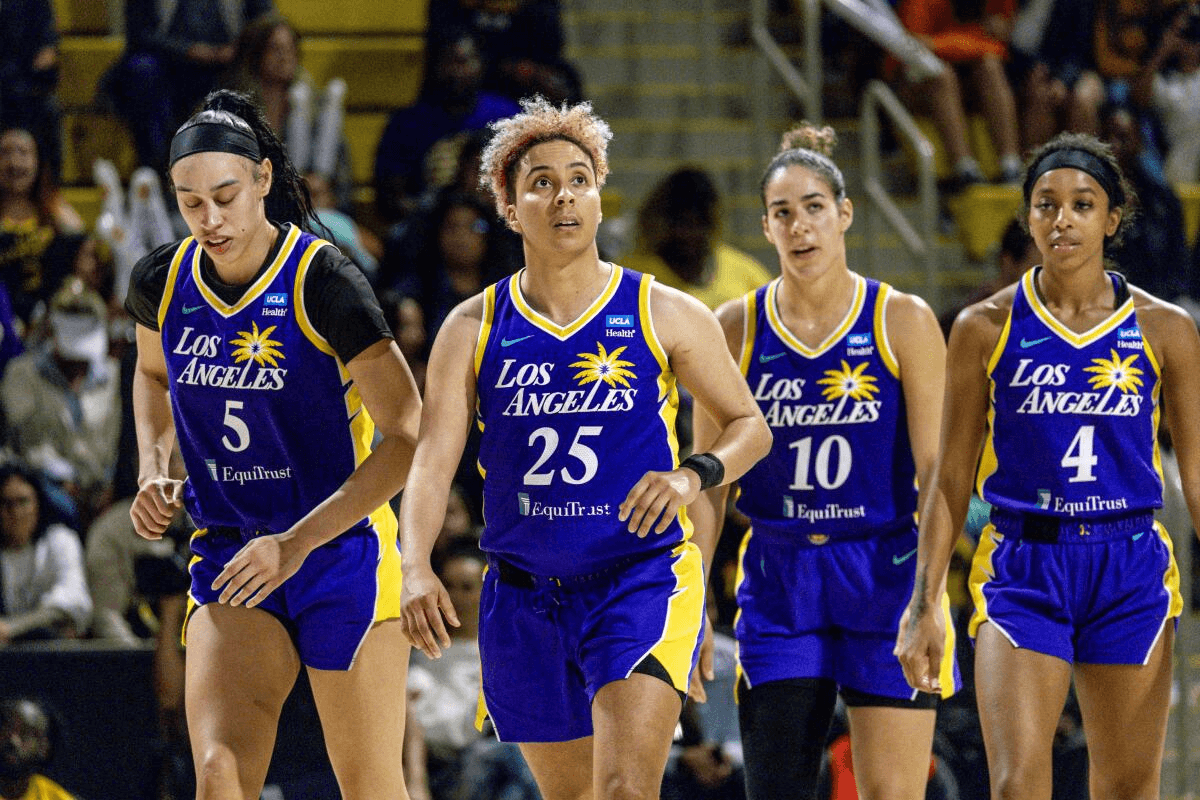Factors that Led to Widespread Rise of Women’s Basketball We See Today
Main courtesy of the Los Angeles Times.
The history of women's basketball started all the way back in the 19th century, which has since evolved into a global sport. Through its journey, the sport has broken social norms and faced various challenges.
The game's history dates back to the 19th century, which was first invented by Dr. Naismith in 1891. After adapting his rules in 1892, "Mother of Women's Basketball" Senda Berenson helped pioneer the sport. Although it was the beginning of the modern version of basketball, it was initially focused more on physical activity and socialization.
During the early 20th century, women's basketball was in its most crucial period. Although it was gaining popularity in colleges, women were still discouraged from participating in competitive leagues due to certain social norms. Despite these obstacles, the passion for the sport still persisted.
In 1972, the US Senate ratified Title IX, which prohibited gender discrimination in educational institutions, including in sports. This legislation has led to a significant increase in women's college basketball participation and has significantly enhanced the quality of programs that cater to this demographic. Title IX has played an important role in advancing gender equality in athletics and has helped boost the growth of this sport at all levels worldwide.
The media coverage that has been provided to women's basketball over the years has greatly contributed to its growth. In addition to increasing the sport's popularity, this has also provided women with more opportunities to participate in it.
Apart from showcasing the talents of female athletes, media coverage has also highlighted the discrimination and disadvantages experienced by them, such as the lack of professional opportunities and unequal pay. The continuous media coverage that is provided to women's basketball will help promote gender equality and ensure its continued success.

Despite the various achievements that have been made in women's basketball, there are still many challenges that need to be resolved in order for it to continue thriving. Some of these include the lack of media coverage, professional opportunities, and unequal pay. But, the future of the sport looks promising as more emphasis is placed on gender equality and the achievements of female athletes. By addressing these issues and promoting the sport, women's basketball can continue to develop and inspire the next generation of athletes.
Goal Five is for the “Ever Athlete”
Overview of Title IX
In 1972, the US Supreme Court ruled that sex discrimination is a form of discrimination that can be prevented under the Education Amendments. This federal law aims to ensure that women and girls are not excluded from participating in and receiving benefits from educational programs. Although Title IX is often linked to sports, it also covers other areas of education.
The goal of Title IX was to ensure that girls and women have equal opportunities in educational institutions. This included having access to sports, which historically has been a domain where women were often underrepresented. Prior to the law's implementation, women's basketball teams were rarely seen in college, and they often lacked the necessary resources to succeed.
The implementation of Title IX led to a paradigm shift in the way educational institutions treat women's sports programs. It required them to treat them in a similar manner to men's programs. Although the law didn't create a quota system for funding and resources for women's and men's sports, it still required institutions to make an effort to provide both genders with equal opportunities.
Impact on Women’s Basketball
The Title IX legislation, which was enacted in 1972, has greatly impacted women's basketball programs in the US. Before it was implemented, these teams were often in the shadows of male counterparts, with few resources, a limited following, and little support. The legislation's equal opportunity mandate has since led to a significant change in how women's collegiate athletics are conducted.
One of the most significant effects of Title IX was the creation of women's basketball teams in college. Previously, these teams were often ignored by institutions, forcing them to establish teams by themselves using their own resources to compete. Title IX resulted in a spike in the number of women's basketball programs, as schools and universities started following the regulations.
The growth of women' basketball conferences was linked to the implementation of the Title IX legislation. As the number of teams increased, more conferences were formed, and this led to the establishment of new groups. It gave the players an opportunity to participate at a higher level and gave them a structured schedule.
In response to the growing number of women's basketball players who were able to benefit from Title IX due to its positive effects on women's sports, the WNBA was created in 1996. The league provided them with a platform to continue their careers after college, which was previously not possible for women in the sport.
The success of the WNBA can be attributed to the success of college basketball. Many of the league's players are now able to transition into the professional ranks after their college careers.

Biggest Teams That Dominate the WNBA
New York Liberty
The New York Liberty have become a prominent team within the WNBA due to their success and popularity. Various factors have contributed to their rise, such as a talented roster and the league's growth. Their recent championship win has also increased their fan base and investment.
Key players:
Breanna Stewart
Jonquel Jones
Courtney Vandersloot
Average home attendance: 12,730
Seattle Storm
The Seattle Storm is another team in the WNBA that experiences consistent success, dedicated fans, and strong leadership. It has won four championships and is a perennial candidate for the playoffs. The team is owned by Force 10 Hoops LLC, which has helped the team continue to grow.
Key players:
Skylar Diggins-Smith
Nneka Ogwumike
Ezi Magbegor
Average home attendance: 11,184
Las Vegas Aces

Key players:
A’ja Wilson
Chelsea Gray
Jackie Young
Average home attendance: 11,283
Los Angeles Sparks
The Los Angeles Sparks are a popular team in the WNBA due to their success and the strong support they have from their fans. They have won three championships and are one of the original teams in the league. The Sparks are currently building for the future by developing promising young players like Rickea Jackson and Cameron Brink that have fans excited!
Key players:
Kelsey Plum
Dearica Hamby
Azurá Stevens
Average home attendance: 11,045
Minnesota Lynx

Key players:
Napheesa Collier
Kayla McBride
Courtney Williams
Average home attendance: 9,292
Thanks to the efforts of Title IX, women’s basketball has been able to increase its visibility and shine light on all of the talented athletes that we know and love today. Which team is your favorite to watch and why?




Leave a comment
This site is protected by hCaptcha and the hCaptcha Privacy Policy and Terms of Service apply.